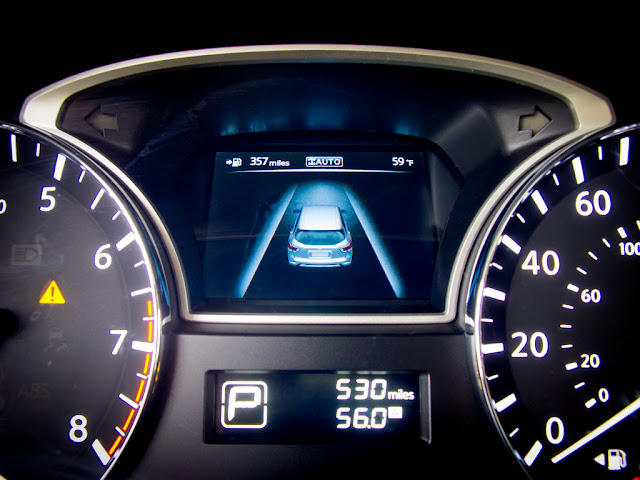During long trips on monotonous roads, the driver's concentration may decrease frequently and many accidents occurred by this lack of concentration and one of the main reason is the deviation of the vehicle from their lane. To find a solution to this problem, automobile manufacturers introduced a technology called "Lane Departure Warning" to keep the vehicle in its path to avoid the accidents.
There are different versions of the LDW systems are available. The basic Lane Departure Warning (LDW) system is designed only to give the warning to alert the driver if the vehicle is leaving a detected lane and the turn signal has not been activated while leaving from the detected lane. But, there are some advanced system available that warns the driver and also automatically brings the vehicle to a safe position by light steering or braking if no action taken by the driver. Generally, all LDW system uses a camera which is usually shared by FCW (Forward Collision Warning) system mounted behind the windshield near the rearview mirror. The camera is designed to recognize lane markings. So, the system can detect when the vehicle is about to leave its lane.
The system can be turned off or on again by pressing the LDW button which is usually located to the left of the steering column. LDW may not detect all lane markings or lane departures. The accuracy will vary based on weather, speed, and road condition. The driver is always responsible to operate the vehicle safely and avoid the collisions.
Different Types of Lane Departure Warning (LDW) Systems:
- Lane Departure Warning (LDW)
- Lane Keeping Assist (LKA)
- Lane Centering Assist (LCA)
Lane Departure Warning (LDW)
This is the basic version of the LDW system. It gives only a warning to alert the driver from an unintentional drift of the vehicle out of its travel lane. The basic LDW system does not correct or provide appropriate steering inputs on its own to correct the vehicle movement. The driver is only responsible to take corrective action by steering the car back to the middle of the lane.If the vehicle begins to move out of a detected lane without a turn signal activated, the system illuminates the LDW indicator on the dashboard or give a lane departure message on MID (Multi-Information Display), sounds the series of beeps, and some of the vehicles give the vibration in the driver's seat or steering wheel to alert the drivers to take appropriate action. It does not work if the road has no lane markings.
Lane Keeping Assist (LKA)
It is also called as Lane Keeping Systems (LKS). This technology not only gives an alert, but it will also make the car back into its right track. When the vehicle drifts too far, and the driver does not take any corrective action, this system will gently steer you back into your lane if you begin to drift out of it. It is designed to assist steering to help and keep the vehicle in the middle of a detected lane. In addition, some the system provides audible visual and tactile alerts to the driver when the vehicle begins to leave a detected lane without a turn signal activation.
Lane Keeping Assist is for the driver's convenience only. It is a substitute for maintaining steering control and will not work if the drivers take their hands from the steering or otherwise fail to steer the car. As mentioned earlier, This system uses the camera located between the windshield and the rearview mirror to detect the lane markings. As the vehicle moves from the center of a detected lane, the steering system applies appropriate torque to return the vehicle to the middle of the lane. The farther it gets from the center, the more torque is applied to keep the vehicle on the right track.
The system may suddenly apply the torque to the steering when the lane markings change. So, you have to turn the system off accordingly whenever you don't need lane-keeping assist.
Lane Centering Assist (LCA)
It is an advanced form of technology. Rather than just giving a warning or bring back the vehicle to the center of the lane when it is moving out of the lane, this type of system always tries to keep a vehicle in the center of the lane. If you have Adaptive Cruise Control and Lane Centering Assist, that will enable the unassisted driving for some seconds.
Some other automotive safety-related articles:
Automotive Safety systems- Introduction
Anti-lock Braking System (ABS) - Simple Explanation
Electronic Stability Control (ESC) - Simple Explanation
Traction Control System (TCS) - Simple Explanation
Automotive Safety systems- Introduction
Anti-lock Braking System (ABS) - Simple Explanation
Electronic Stability Control (ESC) - Simple Explanation
Traction Control System (TCS) - Simple Explanation
Tire (Tyre) Pressure Monitoring System (TPMS) - Simple Explanation
Night Vision System (NVS) in Automobiles - Simple Explanation
Night Vision System (NVS) in Automobiles - Simple Explanation


Comments
Post a Comment